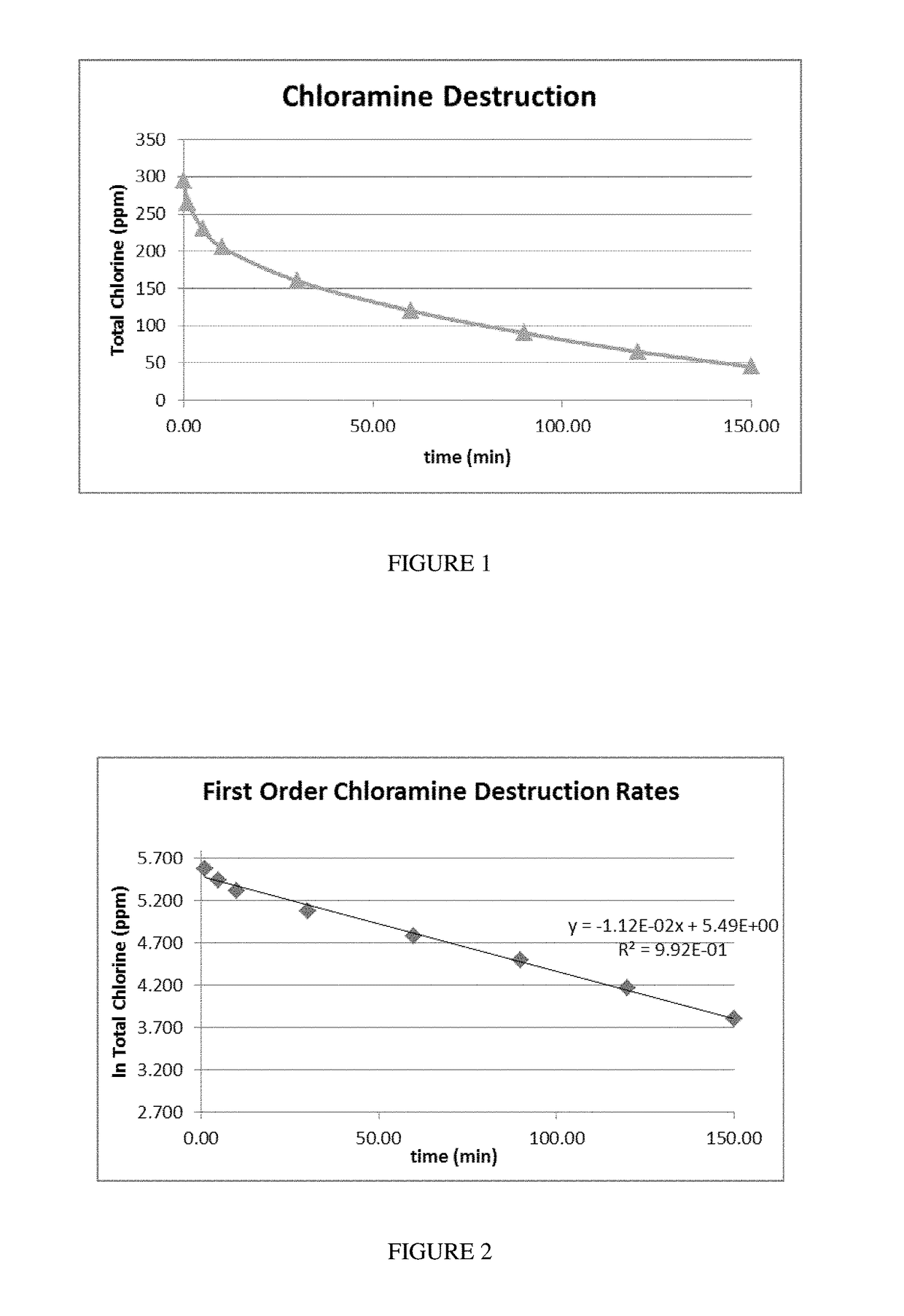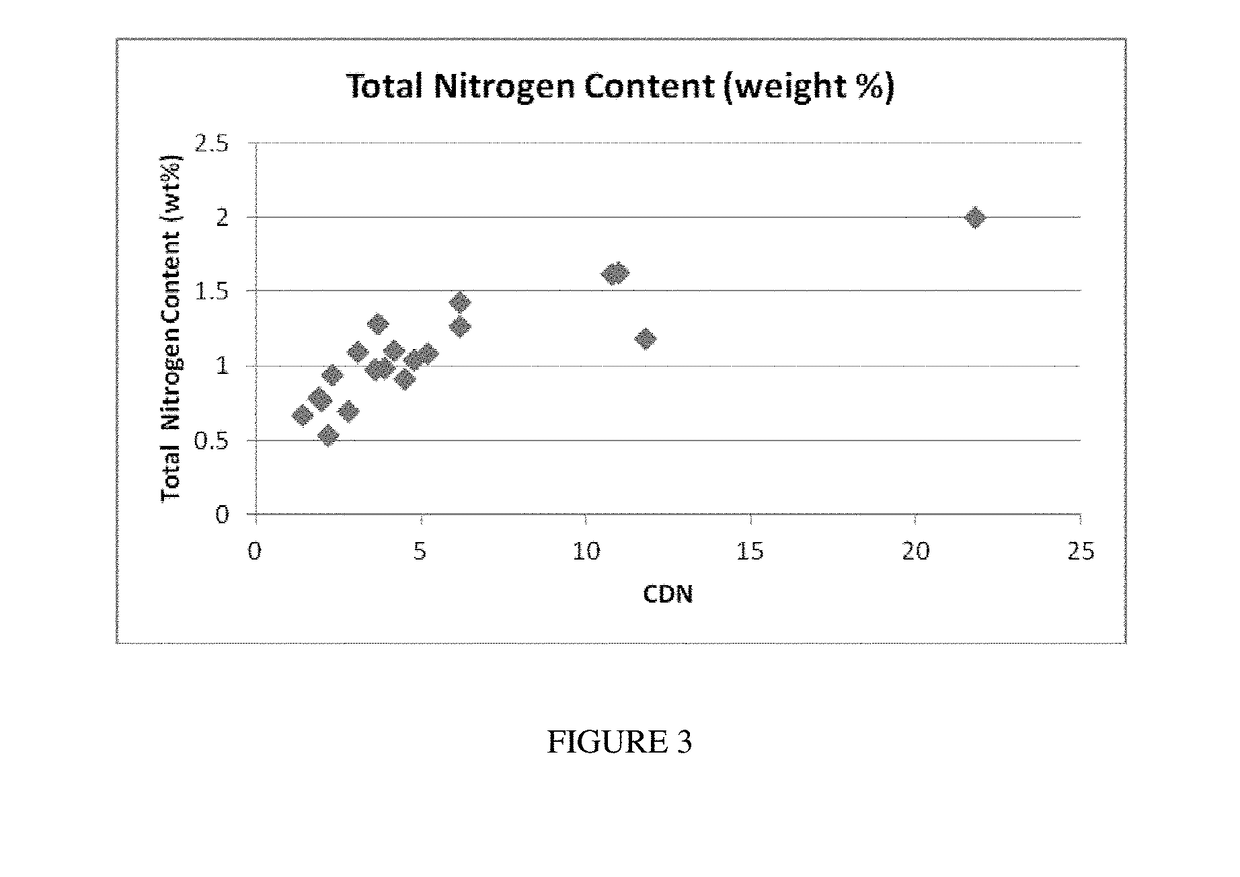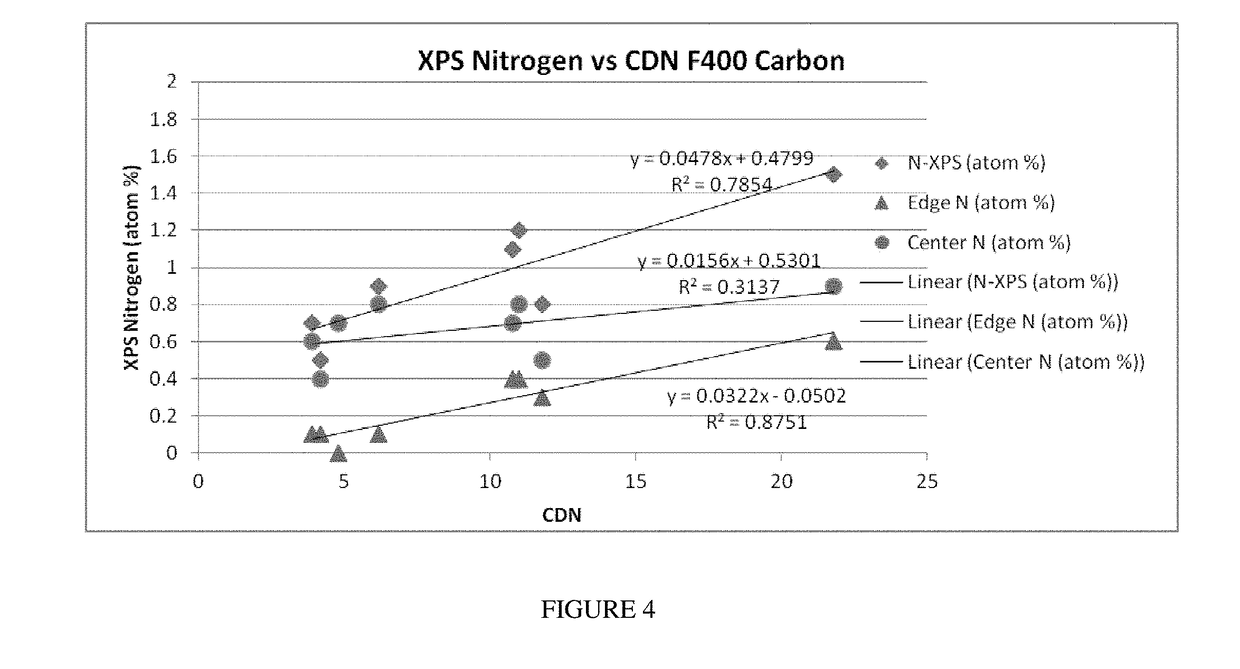Chloramine and chlorine removal material and methods for making the same
- Summary
- Abstract
- Description
- Claims
- Application Information
AI Technical Summary
Benefits of technology
Problems solved by technology
Method used
Image
Examples
example 1
[0057]Activated carbon samples were tested for removal of chlorine and chloramine. Chloramine refers to mono-chloramine, di-chloramine, and tri-chloramine. When ammonia is in equilibrium with chlorine in solution the form of chloramine is pH dependent. The chloramine solution comprised ammonium chloride; sodium hypochlorite and deionized water were mixed to obtain a 1 L solution of 300 ppm chloramine at a pH of 9.0. At a pH value of 9.0, the chloramine species that is present at equilibrium is the mono-chloramine form, which is the most difficult to destroy. The solution was buffered using sodium carbonate to maintain the solution pH during evaluation. The chlorine solution comprised sodium hyprochlorite and deionized water to obtain 1 L of a 300 ppm chlorine solution. One liter of the 300 ppm respective solution was added to an Erlenmeyer flask that was placed in a water bath controlled to 20° C. A constant volume of 2.0 mL activated carbon (sized at 80×325 mesh) was added to the a...
example 2
[0060]Two types of coal-based activated carbon were used as feedstock. F400 is a coal based activated carbon (Calgon Carbon Corp) and CENTAUR (Calgon Carbon Corp) is a coal based activated carbon that has been prepared according to U.S. Pat. No. 6,342,129. Samples in Table 1 identified as being oxidized were oxidized in a tube furnace at 500° C. for one hour with air. After the samples were cooled, samples identified as having urea addition were impregnated with a 50% urea in water solution at a ratio of 4 mL of urea solution to 10 grams of carbon. Calcination was carried out in a tube furnace at 950° C. for one hour in nitrogen followed by cooling in nitrogen. Activations were carried out in a tube furnace at 950° C. for 15 minutes in a steam environment. Preoxidation of activated carbon increases final nitrogen content of the activated carbon. This is shown in Table 1, where in each case, the preoxidized samples contained more nitrogen (Total Nitrogen, wt. %), as determined by ele...
example 3
[0062]One can further characterize the type of nitrogen incorporated into the activated carbon using x-ray photoelectron spectroscopy (XPS). This method was applied to the activated carbon samples listed in Table 1. The types nitrogen present in the activated carbon are characterized as either an “edge” nitrogen or a “center” nitrogen. In the “edge” nitrogen, the nitrogen atom is part of a pyrole or pyridine group residing at the end or edge of a graphitic sheet or plane, and the “edge” nitrogen is identified during XPS analysis by having a binding energy of −399 eV.
[0063]In the “center” nitrogen, the nitrogen atom is bonded as part of the internal structure of several fused aromatic rings. The center nitrogen has a characteristic binding energy of −401 eV when analyzed using XPS. In the embodiments disclosed, as one examines the type of nitrogen present in the urea treated F400 or Centaur activated carbons of Table 1, there is a notable increase in the percentage of “edge” type nit...
PUM
| Property | Measurement | Unit |
|---|---|---|
| Temperature | aaaaa | aaaaa |
| Temperature | aaaaa | aaaaa |
| Temperature | aaaaa | aaaaa |
Abstract
Description
Claims
Application Information
 Login to View More
Login to View More - R&D
- Intellectual Property
- Life Sciences
- Materials
- Tech Scout
- Unparalleled Data Quality
- Higher Quality Content
- 60% Fewer Hallucinations
Browse by: Latest US Patents, China's latest patents, Technical Efficacy Thesaurus, Application Domain, Technology Topic, Popular Technical Reports.
© 2025 PatSnap. All rights reserved.Legal|Privacy policy|Modern Slavery Act Transparency Statement|Sitemap|About US| Contact US: help@patsnap.com



